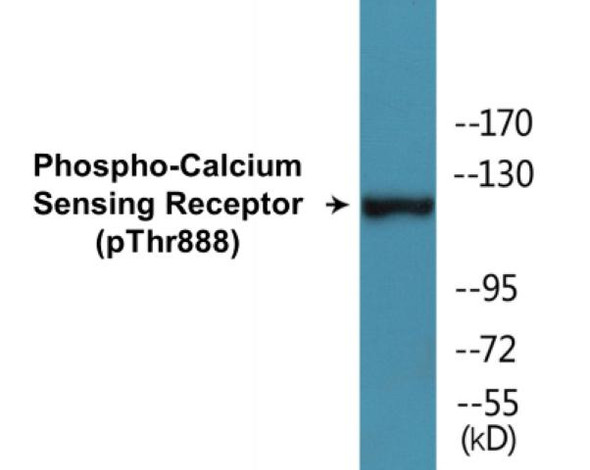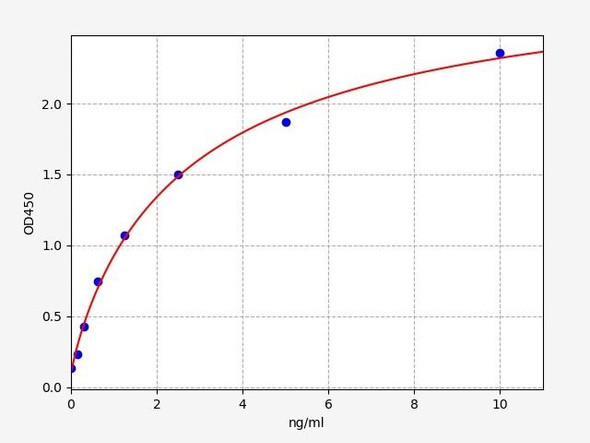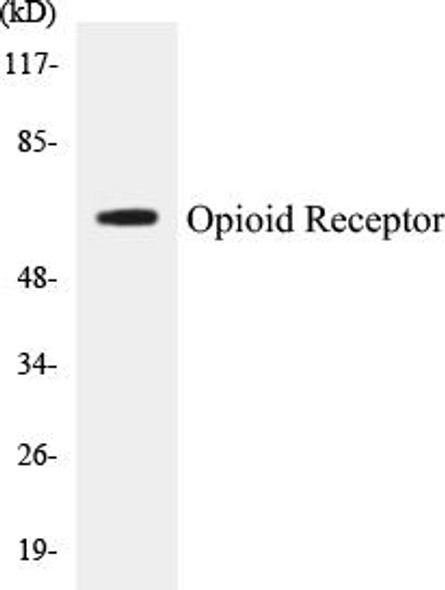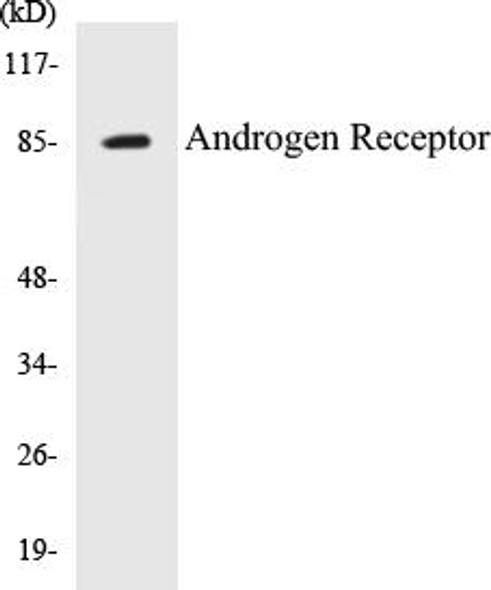Description
Calcium Sensing Receptor Colorimetric Cell-Based ELISA Kit
The Calcium Sensing Receptor Colorimetric Cell-Based ELISA Kit is a cutting-edge tool designed for the accurate measurement of calcium sensing receptor activity in cell culture samples. This kit offers high sensitivity and specificity, providing researchers with reliable and reproducible results for a variety of applications.The calcium sensing receptor is a key player in regulating calcium homeostasis, influencing various physiological processes such as bone mineralization, hormone secretion, and muscle contraction.
Dysregulation of this receptor has been linked to disorders like hyperparathyroidism, kidney stones, and osteoporosis, making it a valuable target for research and drug development.With easy-to-follow protocols and a user-friendly format, the Calcium Sensing Receptor Colorimetric Cell-Based ELISA Kit is an essential tool for studying calcium sensing receptor function and exploring potential therapeutic interventions for calcium-related diseases.
| Product Name: | Calcium Sensing Receptor Colorimetric Cell-Based ELISA |
| Product Code: | CBCAB00554 |
| ELISA Type: | Cell-Based |
| Target: | Calcium Sensing Receptor |
| Reactivity: | Human, Mouse, Rat |
| Dynamic Range: | > 5000 Cells |
| Detection Method: | Colorimetric 450 nmStorage/Stability:4°C/6 Months |
| Format: | 96-Well Microplate |
The Calcium Sensing Receptor Colorimetric Cell-Based ELISA Kit is a convenient, lysate-free, high throughput and sensitive assay kit that can detect Calcium Sensing Receptor protein expression profile in cells. The kit can be used for measuring the relative amounts of Calcium Sensing Receptor in cultured cells as well as screening for the effects that various treatments, inhibitors (ie siRNA or chemicals), or activators have on Calcium Sensing Receptor.
Qualitative determination of Calcium Sensing Receptor concentration is achieved by an indirect ELISA format. In essence, Calcium Sensing Receptor is captured by Calcium Sensing Receptor-specific primary antibodies while the HRP-conjugated secondary antibodies bind the Fc region of the primary antibody. Through this binding, the HRP enzyme conjugated to the secondary antibody can catalyze a colorimetric reaction upon substrate addition. Due to the qualitative nature of the Cell-Based ELISA, multiple normalization methods are needed:
| 1. | A monoclonal antibody specific for human GAPDH is included to serve as an internal positive control in normalizing the target absorbance values. |
| 2. | Following the colorimetric measurement of HRP activity via substrate addition, the Crystal Violet whole-cell staining method may be used to determine cell density. After staining, the results can be analysed by normalizing the absorbance values to cell amounts, by which the plating difference can be adjusted. |
| Database Information: | Gene ID: 846, UniProt ID: P41180, OMIM: 145980/146200/239200/601199, Unigene: Hs.435615 |
| Gene Symbol: | CASR |
| Sub Type: | None |
| UniProt Protein Function: | CaR: a G-protein coupled receptor that activates a phosphatidylinositol-calcium second messenger system. Functions as a calcium sensor for parathyroid and kidney to determine the extracellular calcium concentration and thus helps to maintain a stable calcium concentration. Two alternatively-spliced isoforms have been described. |
| UniProt Protein Details: | Protein type:Membrane protein, integral; Membrane protein, multi-pass; Receptor, GPCR; Motility/polarity/chemotaxis; GPCR, family 3 Chromosomal Location of Human Ortholog: 3q13 Cellular Component: integral to plasma membrane; plasma membrane Molecular Function:phosphoinositide phospholipase C activity; protein binding Biological Process: anatomical structure morphogenesis; cellular calcium ion homeostasis; chemosensory behavior; detection of calcium ion; ossification Disease: Epilepsy, Idiopathic Generalized, Susceptibility To, 8; Hyperparathyroidism, Neonatal Severe; Hypocalcemia, Autosomal Dominant 1; Hypocalciuric Hypercalcemia, Familial, Type I |
| NCBI Summary: | The protein encoded by this gene is a G protein-coupled receptor that is expressed in the parathyroid hormone (PTH)-producing chief cells of the parathyroid gland, and the cells lining the kidney tubule. It senses small changes in circulating calcium concentration and couples this information to intracellular signaling pathways that modify PTH secretion or renal cation handling, thus this protein plays an essential role in maintaining mineral ion homeostasis. Mutations in this gene cause familial hypocalciuric hypercalcemia, familial, isolated hypoparathyroidism, and neonatal severe primary hyperparathyroidism. [provided by RefSeq, Jul 2008] |
| UniProt Code: | P41180 |
| NCBI GenInfo Identifier: | 1168781 |
| NCBI Gene ID: | 846 |
| NCBI Accession: | P41180.2 |
| UniProt Secondary Accession: | P41180,Q13912, Q16108, Q16109, Q16110, Q16379, Q2M1T0 Q4PJ19, |
| UniProt Related Accession: | P41180 |
| Molecular Weight: | 121,772 Da |
| NCBI Full Name: | Extracellular calcium-sensing receptor |
| NCBI Synonym Full Names: | calcium sensing receptor |
| NCBI Official Symbol: | CASR |
| NCBI Official Synonym Symbols: | CAR; FHH; FIH; HHC; EIG8; HHC1; NSHPT; PCAR1; GPRC2A; HYPOC1 |
| NCBI Protein Information: | extracellular calcium-sensing receptor |
| UniProt Protein Name: | Extracellular calcium-sensing receptor |
| UniProt Synonym Protein Names: | Parathyroid cell calcium-sensing receptor 1; PCaR1 |
| Protein Family: | Extracellular calcium-sensing receptor |
| UniProt Gene Name: | CASR |
| UniProt Entry Name: | CASR_HUMAN |
| Component | Quantity |
| 96-Well Cell Culture Clear-Bottom Microplate | 2 plates |
| 10X TBS | 24 mL |
| Quenching Buffer | 24 mL |
| Blocking Buffer | 50 mL |
| 15X Wash Buffer | 50 mL |
| Primary Antibody Diluent | 12 mL |
| 100x Anti-Phospho Target Antibody | 60 µL |
| 100x Anti-Target Antibody | 60 µL |
| Anti-GAPDH Antibody | 60 µL |
| HRP-Conjugated Anti-Rabbit IgG Antibody | 12 mL |
| HRP-Conjugated Anti-Mouse IgG Antibody | 12 mL |
| SDS Solution | 12 mL |
| Stop Solution | 24 mL |
| Ready-to-Use Substrate | 12 mL |
| Crystal Violet Solution | 12 mL |
| Adhesive Plate Seals | 2 seals |
The following materials and/or equipment are NOT provided in this kit but are necessary to successfully conduct the experiment:
- Microplate reader able to measure absorbance at 450 nm and/or 595 nm for Crystal Violet Cell Staining (Optional)
- Micropipettes with capability of measuring volumes ranging from 1 µL to 1 ml
- 37% formaldehyde (Sigma Cat# F-8775) or formaldehyde from other sources
- Squirt bottle, manifold dispenser, multichannel pipette reservoir or automated microplate washer
- Graph paper or computer software capable of generating or displaying logarithmic functions
- Absorbent papers or vacuum aspirator
- Test tubes or microfuge tubes capable of storing ≥1 ml
- Poly-L-Lysine (Sigma Cat# P4832 for suspension cells)
- Orbital shaker (optional)
- Deionized or sterile water
*Note: Protocols are specific to each batch/lot. For the correct instructions please follow the protocol included in your kit.
| Step | Procedure |
| 1. | Seed 200 µL of 20,000 adherent cells in culture medium in each well of a 96-well plate. The plates included in the kit are sterile and treated for cell culture. For suspension cells and loosely attached cells, coat the plates with 100 µL of 10 µg/ml Poly-L-Lysine (not included) to each well of a 96-well plate for 30 minutes at 37°C prior to adding cells. |
| 2. | Incubate the cells for overnight at 37°C, 5% CO2. |
| 3. | Treat the cells as desired. |
| 4. | Remove the cell culture medium and rinse with 200 µL of 1x TBS, twice. |
| 5. | Fix the cells by incubating with 100 µL of Fixing Solution for 20 minutes at room temperature. The 4% formaldehyde is used for adherent cells and 8% formaldehyde is used for suspension cells and loosely attached cells. |
| 6. | Remove the Fixing Solution and wash the plate 3 times with 200 µL 1x Wash Buffer for five minutes each time with gentle shaking on the orbital shaker. The plate can be stored at 4°C for a week. |
| 7. | Add 100 µL of Quenching Buffer and incubate for 20 minutes at room temperature. |
| 8. | Wash the plate 3 times with 1x Wash Buffer for 5 minutes each time. |
| 9. | Add 200 µL of Blocking Buffer and incubate for 1 hour at room temperature. |
| 10. | Wash 3 times with 200 µL of 1x Wash Buffer for 5 minutes each time. |
| 11. | Add 50 µL of 1x primary antibodies (Anti-Calcium Sensing Receptor Antibody and/or Anti-GAPDH Antibody) to the corresponding wells, cover with Parafilm and incubate for 16 hours (overnight) at 4°C. If the target expression is known to be high, incubate for 2 hours at room temperature. |
| 12. | Wash 3 times with 200 µL of 1x Wash Buffer for 5 minutes each time. |
| 13. | Add 50 µL of 1x secondary antibodies (HRP-Conjugated AntiRabbit IgG Antibody or HRP-Conjugated Anti-Mouse IgG Antibody) to corresponding wells and incubate for 1.5 hours at room temperature. |
| 14. | Wash 3 times with 200 µL of 1x Wash Buffer for 5 minutes each time. |
| 15. | Add 50 µL of Ready-to-Use Substrate to each well and incubate for 30 minutes at room temperature in the dark. |
| 16. | Add 50 µL of Stop Solution to each well and read OD at 450 nm immediately using the microplate reader. |
(Additional Crystal Violet staining may be performed if desired – details of this may be found in the kit technical manual.)






